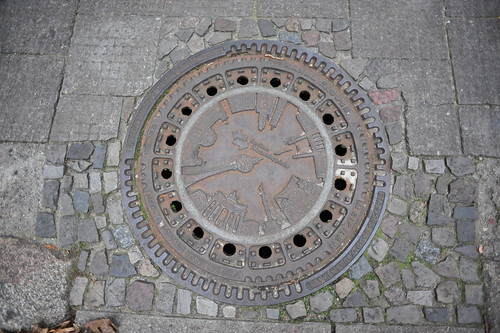A functionally-decorative manhole cover that emulates the features of a compass rose for those who care not to navigate by dead-reckoning, rather feature or landmark-reckoning. I know these are all over the place, the image of it summoned up a recent conversation about how much built-in navigation cities should provide. The pro-argument being that it helps tourists to get around a city when they don’t have the vernacular, experienced wayfinding abilities of a native or someone who has had time to acclimate and grow accustom to the nuances of what is where. The con-argument is that these sorts of waypoints and navigation aids makes cities over mapped, removing the unexpected encounter that can only happen when you’re lost, or eroding the experience and feeling of becoming “native” and used to a city’s ways on ones own.
I can see something in each perspective, although I would generally prefer to leave a little more to chance when navigating a city. This photo is of me in Tokyo, 2005 after I managed to get a Tokyo map uploaded to my Garmin GPS. I had absolutely 0% navi experience in Tokyo and was pretty sure I’d get completely lost, which I did on an occasion or two, but was able to rely on the GPS to get me back on track. (There were no navigation features, just top-down POV and compass.) I’m certain it changed the experience, but there was not a whole lot left to rely upon besides my own wits and my trusty Tokyo City Bilingual Atlas.

